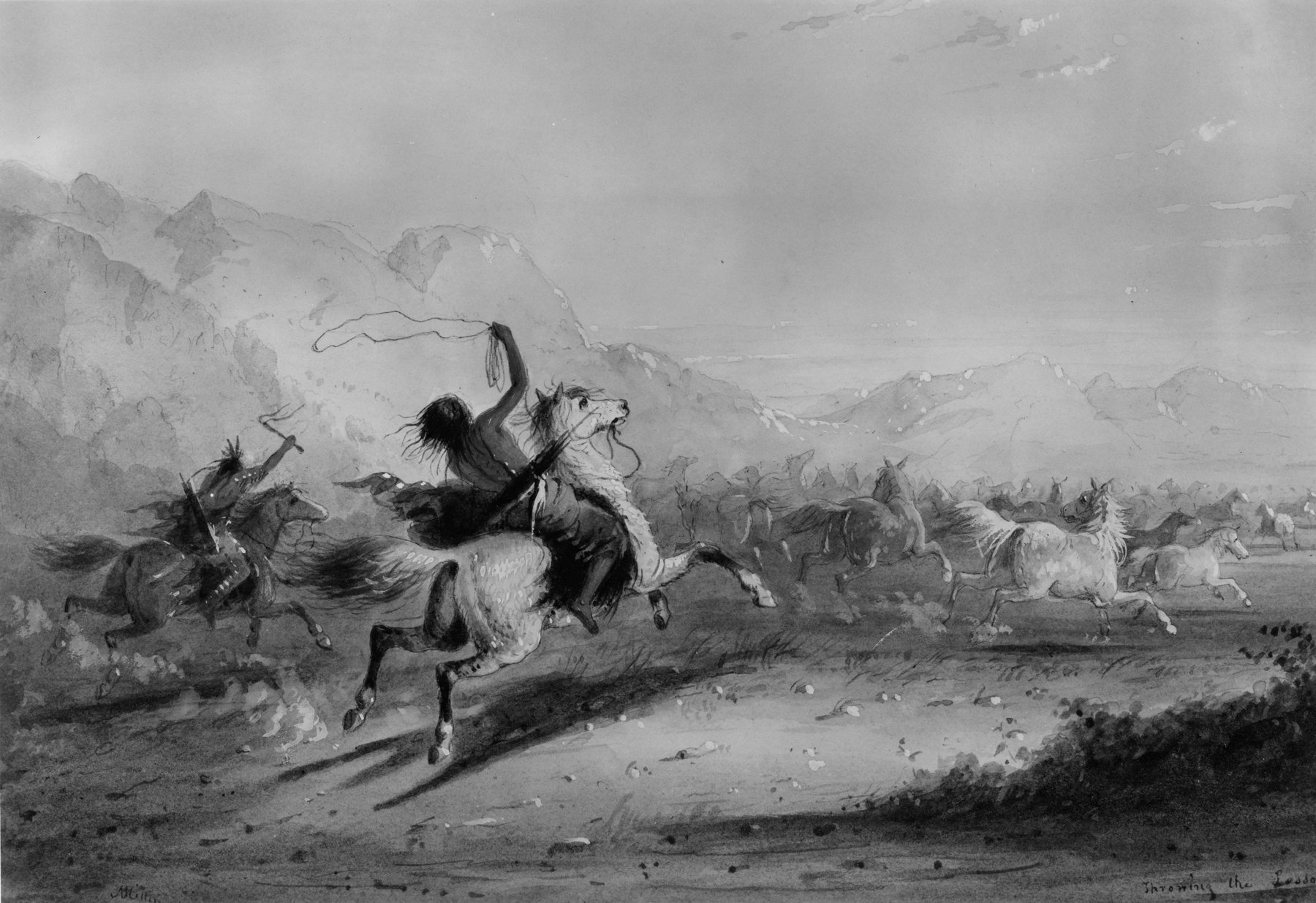Capture of Wild Horses by Indians
(18th and 19th Centuries )
Extracts from Alfred Jacob Miller’s original text, which accompanied his images of Native Americans, are included below for reference.
"The Lariat used for this purpose is composed of plaited Bull-hide, is remarkably strong, pliable, and of sufficient weight for throwing well, about 25 feet ong, one end generally secured to the rider's horse, the other having a running noose, held by the right hand, the coil being so arranged as not to tangle when the rope is thrown. On approaching the band, his body swaying to and fro, the noose part is flourished above the head, and as opportunity offers, is flung with great precision and dexterity, around the neck or leg, whichever appears most feasible to the Indian; and the tame horse is so trained that he immediately resists the strain by bracing himself back, against the suddenness of the jerk. Another mode of capturing is called by the trapper 'creasing' with the rifle, the object is to lodge the ball at the junction of the mane with the neck; if this is attained. the horse is knocked down, and only stunned, is secured and broken. This requires of course, a good marksman, or in the Vernacular, one who shoots 'Center.'" A.J. Miller, extracted from "The West of Alfred Jacob Miller" (1837).
In July 1858 William T. Walters commissioned 200 watercolors at twelve dollars apiece from Baltimore born artist Alfred Jacob Miller. These paintings were each accompanied by a descriptive text, and were delivered in installments over the next twenty-one months and ultimately were bound in three albums. Transcriptions of field-sketches drawn during the 1837 expedition that Miller had undertaken to the annual fur-trader's rendezvous in the Green River Valley (in what is now western Wyoming), these watercolors are a unique record of the closing years of the western fur trade.
Inscription
Provenance
Provenance (from the French provenir, 'to come from/forth') is the chronology of the ownership, custody, or location of a historical object. Learn more about provenance at the Walters.
William T. Walters, Baltimore, 1858-1860, by commission; Henry Walters, Baltimore, 1894, by inheritance; Walters Art Museum, 1931, by bequest.
Conservation
| Date | Description | Narrative |
|---|---|---|
| 4/1/1950 | Treatment | cleaned |
Geographies
USA (Place of Origin)
Measurements
8 11/16 x 12 15/16 in. (22.1 x 32.9 cm)
Credit Line
Commissioned by William T. Walters, 1858-1860
Location in Museum
Not on view
Accession Number
In libraries, galleries, museums, and archives, an accession number is a unique identifier assigned to each object in the collection.
In libraries, galleries, museums, and archives, an accession number is a unique identifier assigned to each object in the collection.
37.1940.80



